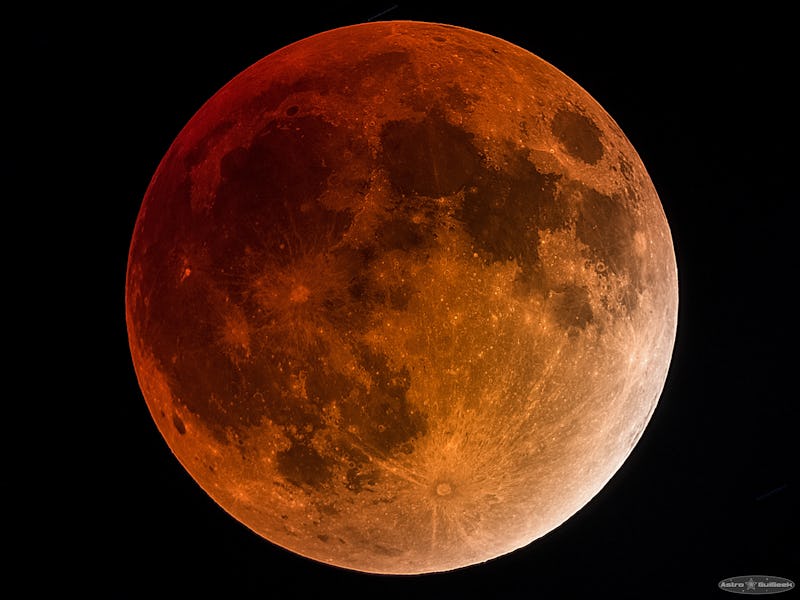What's the Super Blue Blood Moon? The Rare Event Explained
It's a lunar trifecta.

The new year has just begun, but it’s already gracing stargazers with some seriously loony lunar activity, and it’s only going to get better.
On January 31, there will be a super blue blood moon; try saying that three times fast. This seriously rare event is actually the crossover of three individual lunar occurrences happening at the same exact time. So if you’re lucky enough to witness the super blue blood moon you’ll be seeing a trifecta of interactions the moon has with the earth and the sun.
Let’s break this down and explain what exactly will make the moon super, blue, and blood on this day.
The supermoon rises behind Glastonbury Tor on September 28.
What makes it super?
A supermoon occurs when the moon’s perigee — the point in its orbit that it is nearest to the earth — coincides with a full moon. The moon orbits our planet on an elliptical path, so there’s a point in its journey that it gets especially up close and personal with the earth. During this time, it appears to be larger than usual from our point of view making it seem ever-so-slightly more “super.”
The second supermoon of the month will be happening on January 30 and 31. The moon will reach its perigee at around 4:54 A.M. Eastern and will be 223,069 miles from Earth, according to EarthSky.org.
What makes it blue?
Unfortunately, the moon won’t be glowing a bright shade of blue. A blue moon is just a name for when two full moon occur within the same calendar month. So there should be, on average, one full moon a month. However, once every 2.7 years there’s a month with an extra fully lit luna. This is where the saying, “once in a blue moon,” comes from as blue moons don’t happen all that often.
The first full moon already took place on the night of January 1 and the universe is gifting us a second on the last day of the month.
What makes it “blood”?
While the super blue blood moon won’t be shining any shade of azure, it will take on a coppery-reddish glow on January 31. Now, the blood moon isn’t a scientific term but it describes the color the moon takes on when it undergoes a total eclipse.
During a total lunar eclipse the earth is in between the sun and the moon, this means the moon is not receiving direct sunlight from the sun. Instead the only light you see is refracted through earth’s atmosphere, giving it a red tinge. Because of this colorful effect people sometimes call a lunar eclipse a blood moon.
All three of these phenomena will be occurring at the same time at the end of January, giving the super blue blood moon its compound name.
The eclipse will begin at around 6:48 A.M. Eastern or 3:48 A.M. Pacific. Stargazers on the West coast will have an easier time catching a glimpse of this rare occurrence, but if East coasters are able to get a high vantage point overlooking the Western horizon they could get a good view.
Keep those telescopes close by — January is going to be stellar.